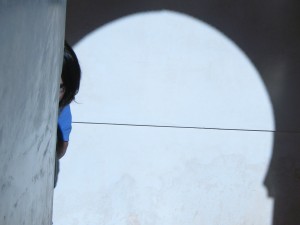There is a formula that helps organisations become more capable, and it starts with supporting staff to care.
Today’s educator is faced with a constantly changing technology landscape. Education institutions see the importance of keeping up, in financial, reputational and pedagogical terms. But keeping abreast of developments and experimenting with new approaches requires time. Time to research, discuss and practice.
Increasingly, teaching staff are tasked with finding and testing education technology that supports their practice, while the institution tasks itself with providing foundation platforms such as the ubiquitous learning management system.
For teaching staff finding time to develop their digital capability can be difficult. Not only are there pressing and immediate issues to be dealt with, the approach – where to start or what to consider next – can be unclear.
Personal emotional justification is critically important for self-directed learning. Caring enough to investigate requires an understanding of the purpose and potential benefits of spending time on new education technologies.
Information on new technologies is everywhere. But guidance from an institution about how it supports staff in a programme of self-directed professional development is rare. We may say “check out new education technologies and try some out” in performance planning, but the question of ‘’how” remains unanswered.
Providing advice about how to approach self-directed professional development is challenging: staff need to feel supported and be willing to investigate and apply new technologies. The institution needs to know that associated risks are being minimised and institutional goals remain the objective.
An institution that provides justification and pathways to staff and trusts that staff will act with the institution policy and strategy in mind will be more successful in enabling self-directed education technology development.
Let’s not forget the time it takes to research, discus and practice. Here an institution can help by legitimising self-directed education technology development and ensuring professional development time is available.
The use of social media to discuss and share ideas and the use of blended courses to help staff understand possible pedagogical approaches provides flexibility to pursue an interest in free moments or outside of work – if the staff member cares to do so.
The point being, they need to care to do so. Providing time, pathways and permission may be enough to navigate the fast-changing education technology landscape. But an institution is unlikely to change without everyone understanding the mission and caring about themselves, the institution and the lives they touch.
That is why I see the communication and messaging from institution leadership as having a pivotal influence in developing organisational capability. The key elements must be there (the time, pathways, and permissions) but emotional justification by the individual is a critical element – and this comes from caring.
So, the final piece of the equation is communication. An institution can help staff understand, and ultimately to care, by using interwoven messages, channels and voices to provide reinforcement and clarity about the things that matter: the way we think and behave, our business priorities, and the importance of each individual as part of our shared mission.




 of the day, as the world gets smaller with all the technologies that enable us to connect beyond borders, everyone should be treated truly without judgment except for the benefit and effort they bring. We have to up our game, quality, and aim our focus at the end results. To get there, we have to leave all inhibitions, face the challenges with much gusto, enough of the ‘bring-others-down-to-get-ahead’ syndrome, we’re all heading the same way, it’s faster and easier if we help each other.
of the day, as the world gets smaller with all the technologies that enable us to connect beyond borders, everyone should be treated truly without judgment except for the benefit and effort they bring. We have to up our game, quality, and aim our focus at the end results. To get there, we have to leave all inhibitions, face the challenges with much gusto, enough of the ‘bring-others-down-to-get-ahead’ syndrome, we’re all heading the same way, it’s faster and easier if we help each other.


